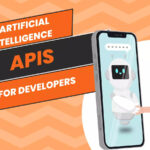
10 Artificial Intelligence APIs for Developers
9th July 2024
What’s new in Flutter 3.22
13th July 2024The landscape of recruitment and selection has undergone significant transformation in recent years. With advancements in technology, shifts in workforce demographics, and the changing nature of work itself, modern businesses must adapt their strategies to attract and retain top talent.

Here are some effective recruitment and selection strategies tailored for today’s dynamic workforce.
1. Leveraging Technology and Data Analytics
Technology plays a crucial role in modern recruitment processes. Utilizing applicant tracking systems (ATS), artificial intelligence (AI), and data analytics can streamline the recruitment process, making it more efficient and effective.
- Applicant Tracking Systems (ATS): These systems help manage and track job applications, ensuring that no candidate is overlooked and that the hiring process is smooth.
- AI in Recruitment: AI can assist in screening resumes, scheduling interviews, and even conducting initial assessments through chatbots, saving time and reducing bias.
- Data Analytics: Analyzing data from recruitment processes can provide insights into the effectiveness of different strategies, helping businesses refine their approaches.
2. Employer Branding and Employee Value Proposition (EVP)
A strong employer brand is essential to attract top talent. Companies must clearly communicate their values, culture, and benefits to stand out in a competitive job market.
- Employer Branding: Investing in a strong employer brand involves highlighting what makes the company a great place to work. This can be done through social media, company websites, and employee testimonials.
- Employee Value Proposition (EVP): EVP is the unique set of benefits that an employee receives in return for the skills, capabilities, and experience they bring to a company. A compelling EVP can attract and retain the right talent.
3. Embracing Diversity and Inclusion
A diverse and inclusive workforce brings varied perspectives and ideas, driving innovation and growth. Companies must prioritize diversity and inclusion (D&I) in their recruitment and selection strategies.
- Diverse Sourcing Channels: Use various channels to reach a diverse pool of candidates, such as job boards focused on underrepresented groups, partnerships with community organizations, and inclusive language in job postings.
- Bias Reduction in Selection: Implementing structured interviews and using diverse hiring panels can help reduce unconscious bias in the selection process.
4. Candidate Experience

The candidate experience can significantly impact a company’s ability to attract top talent. A positive experience can enhance a company’s reputation, while a negative one can deter potential candidates.
- Clear Communication: Keeping candidates informed throughout the process, providing timely feedback, and being transparent about the stages can enhance the candidate experience.
- Efficient Processes: Streamlining the application and interview processes to reduce time-to-hire ensures that candidates remain engaged and interested.
5. Skill-Based Assessments and Flexible Criteria
The modern workforce often values skills and experience over traditional qualifications. Adopting skill-based assessments and flexible criteria can help identify the best candidates for the job.
- Skill-Based Assessments: Implement practical assessments that evaluate candidates’ abilities to perform specific tasks relevant to the job.
- Flexible Criteria: Consider candidates with non-traditional backgrounds or those who have gained relevant experience through unconventional means.
6. Internal Mobility and Succession Planning
Promoting from within and having a clear succession plan can enhance employee engagement and retention, ensuring that talent development aligns with business needs.
- Internal Mobility Programs: Encourage employees to apply for open positions within the company, providing opportunities for career growth and development.
- Succession Planning: Identify and develop potential future leaders within the organization to ensure continuity and stability.
7. Social Media Recruitment
Social media platforms are powerful tools for reaching a large and diverse audience. They offer a way to engage with potential candidates and promote job openings creatively.
- LinkedIn: Utilize LinkedIn for professional networking, job postings, and sourcing passive candidates. Engage with industry groups and share content to build your employer brand.
- Facebook and Instagram: Share job postings, company culture content, and employee stories. Use targeted ads to reach specific demographics.
- Twitter: Use Twitter for real-time engagement, job postings, and industry updates. Participate in relevant hashtags and Twitter chats.
8. Employee Referral Programs
Employee referrals are a highly effective way to find quality candidates. Employees who refer candidates often have a good understanding of the company’s culture and job requirements.
- Incentivize Referrals: Offer bonuses or other rewards for successful hires through employee referrals.
- Streamline the Process: Make it easy for employees to refer candidates by providing simple referral forms and clear guidelines.
9. University Partnerships and Internships

Building relationships with universities and offering internships can help create a pipeline of young talent.
- Campus Recruiting: Participate in job fairs, career events, and campus presentations to engage with students and recent graduates.
- Internship Programs: Offer internships that provide meaningful work experiences and potential pathways to full-time employment.
10. Recruitment Marketing
Recruitment marketing involves using marketing tactics to attract and engage candidates, similar to how companies market their products to customers.
- Content Marketing: Create valuable content, such as blogs, videos, and podcasts, that showcases your company culture, industry expertise, and employee experiences.
- Email Campaigns: Send targeted email campaigns to passive candidates to keep them informed about job openings and company updates.
11. Employer Reviews and Reputation Management
Candidates often research companies on review sites like Glassdoor and Indeed before applying. Maintaining a positive online reputation is crucial.
- Monitor Reviews: Regularly check review sites to understand employee sentiments and address any negative feedback.
- Encourage Positive Reviews: Ask current employees to share their positive experiences online to enhance your company’s reputation.
12. Continuous Improvement and Feedback Loops
Constantly evaluating and improving recruitment and selection processes ensures that they remain effective and aligned with business goals.
- Candidate Feedback: Collect feedback from candidates about their experience during the recruitment process and use it to make improvements.
- Recruitment Metrics: Track key metrics such as time-to-hire, cost-per-hire, and candidate satisfaction to measure the effectiveness of your strategies.
13. Mentorship and Onboarding Programs
Effective onboarding and mentorship programs can improve new hire retention and integration into the company culture.
- Structured Onboarding: Develop a comprehensive onboarding program that covers company policies, role-specific training, and cultural integration.
- Mentorship Programs: Pair new hires with experienced employees who can provide guidance, support, and career development advice.
Conclusion
The modern workforce requires innovative and adaptable recruitment and selection strategies. By leveraging technology, prioritizing diversity and inclusion, enhancing the candidate experience, and embracing flexibility, companies can attract and retain top talent in a competitive landscape. Continuous evaluation and refinement of these strategies will ensure that businesses remain agile and responsive to the evolving needs of the workforce.
Read more like this…
Contact us for more information click





